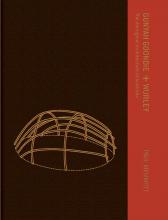
To order "Gunyah, Goondie + Wurley: The Aboriginal Architecture of Australia" please complete the order form and fax or email to University of Queensland Press.
Phone: (+617) 3365 7244
Fax: (+617) 3365 7579
email: finance@uqp.uq.edu.au
Paul Memmott has maintained a research interest in traditional Aboriginal camps and shelters for over 30 years, culminating in over 20 publications. While conducting this research, a large collection of images of Indigenous shelters, houses, structures and camps—approximately 300 in total—have been compiled. Each of the 12 chapters completed for the book contains an essay by the author (sometimes with a co-author) on diverse topics in Indigenous architecture and settlement. These include: a continental overview of architectural forms, materials, construction techniques; three regional overviews of shelters and houses; traditional camps; domiciliary behaviour; the relation of shelter study to anthropology; Town Camps or Fringe Camps that emerged after colonization; how architects have and could apply traditional cultural ideas in design; and the symbols and meanings of shelters and houses. The book includes over two hundred specially-drawn sketches, maps and photographic illustrations in a generous, large book format.
This book will be the leading reference in traditional Aboriginal architecture and as such will make a pivotal contribution to our understanding and appreciation of the nation’s rich and diverse Aboriginal heritage. "It is the first anthropological work to detail Australian Aboriginal architecture and turns on its head the belief that Indigenous people were devoid of houses or towns when Europeans first reached Australian shores" (UQ Communications).
"Gunyah, Goondie + Wurley" won three awards in 2008. It was awarded the Bates Smart Award for Architecture in the Media of the Royal Australian Institute of Architects, Victoria Chapter; it won the best designed reference and scholarly book at the National Book Design Awards and was recognised by the Australian Institute of Aboriginal and Torres Strait Islander Studies (AIATSIS) as the most outstanding scholarly work in Aboriginal and/or Torres Strait islander Studies for the calendar year, taking out the prestigious Stanner Award.

Figure title: Dome hut clad with blady grass that has been attached to the frame with
lawyer cane. It was constructed in the North-east Rainforest Region near the Tully River
between 1893 and 1910. (Source: Roth, W. 1910 “North Queensland Ethnography Bulletin
No. 16, Huts & Shelters”, in Records of the Australian Museum, Vol. 8, No. 1, Plate XII,
Figure 2.)